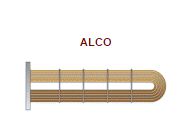



Our extensive selection is designed to meet the diverse needs of various industrial applications, ensuring seamless integration and optimal performance in your heat exchanger systems. Replacement tube bundles are essential components that help maintain the efficiency and longevity of your equipment.
Applications: Replacement tube bundles are crucial for maintaining the functionality of heat exchangers in industries such as chemical processing, oil and gas refineries, power generation, and HVAC systems. These bundles are engineered to handle various fluids, pressures, and temperatures, making them versatile solutions for your thermal management needs.
Features:
Why Choose Our Replacement Tube Bundles: At Boiler Supplies, we specialize in fabricating replacement tube bundles that meet all industry specifications. Our products adhere to ASME and TEMA (B, C, & R) requirements, and all our units comply with Sections I, IV, VIII, Div. 1. We offer replacement tube bundles for a wide range of brands, including Bell & Gossett, Armstrong, Alco, American Standard, A.O. Smith, Cemline, Graham, Old Dominion, Standard Exchange, Taco, Patterson Kelly, Reco, Thrush, and Heat Exchanger USA.
Maintenance and Longevity: Replacing worn or damaged tube bundles is essential to maintain the efficiency and safety of your heat exchangers. Proper maintenance can extend the service life of your equipment, ensuring reliable operation and preventing costly breakdowns. Our replacement tube bundles are designed to withstand the rigors of industrial use, providing you with peace of mind and optimal performance.